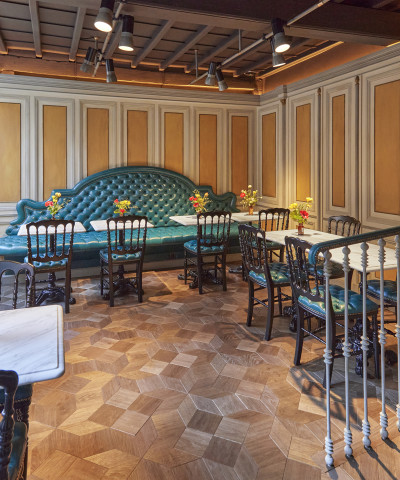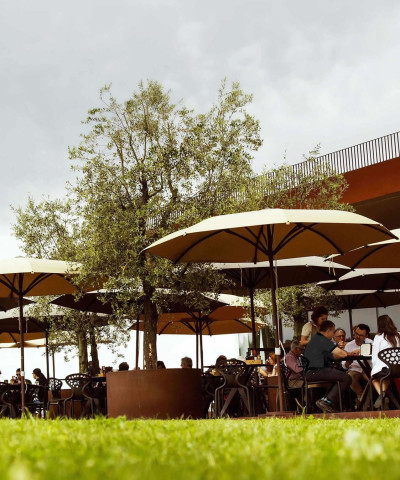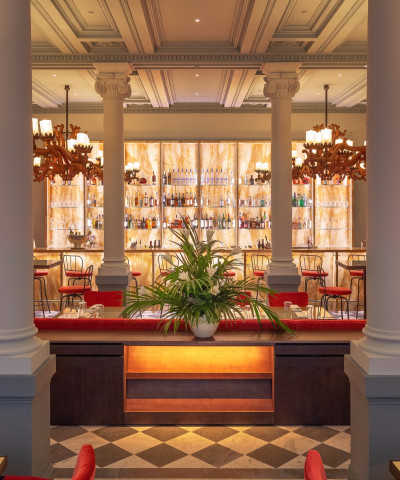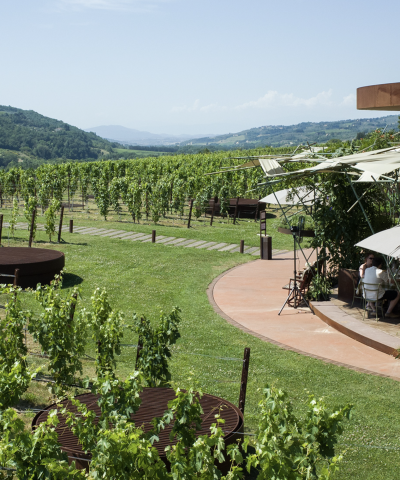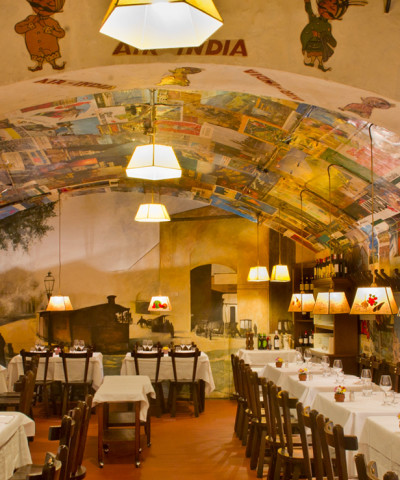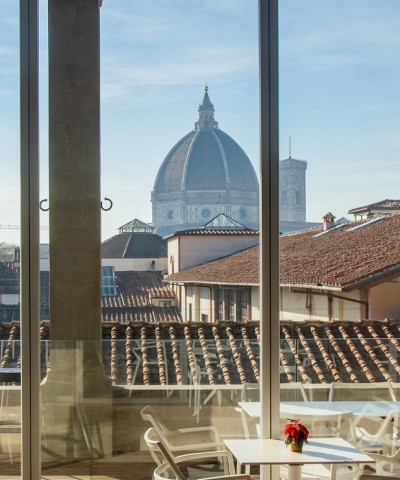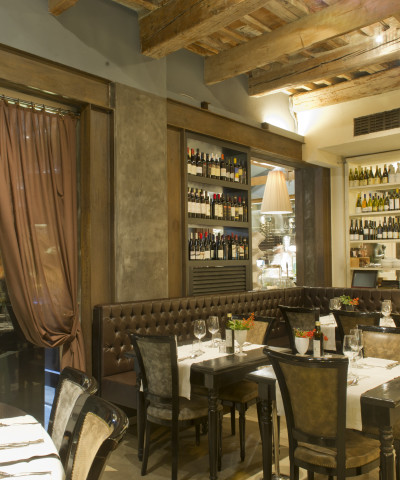7 signature dishes you can't miss in Florence
All the traditional dishes you absolutely must try
As soon as you set foot in Florence, get ready because the amount of masterpieces concentrated in the historic center is unrivaled anywhere else. Bounce your nose up from the Duomo to Piazza della Signoria, from Ponte Vecchio to the Boboli Gardens. If you're smart and have pre-booked a visit to some iconic museum, don't give yourself a second thought, just walk in and enjoy the show. But even for you, walking ten feet above the ground suspended between beauty and enchantment, lunchtime languor will come. Consider it the least of your worries: in Florence, the art of eating is equal to what you've just left behind as you exit the Uffizi or Accademia, or take your eyes off Brunelleschi's dome.
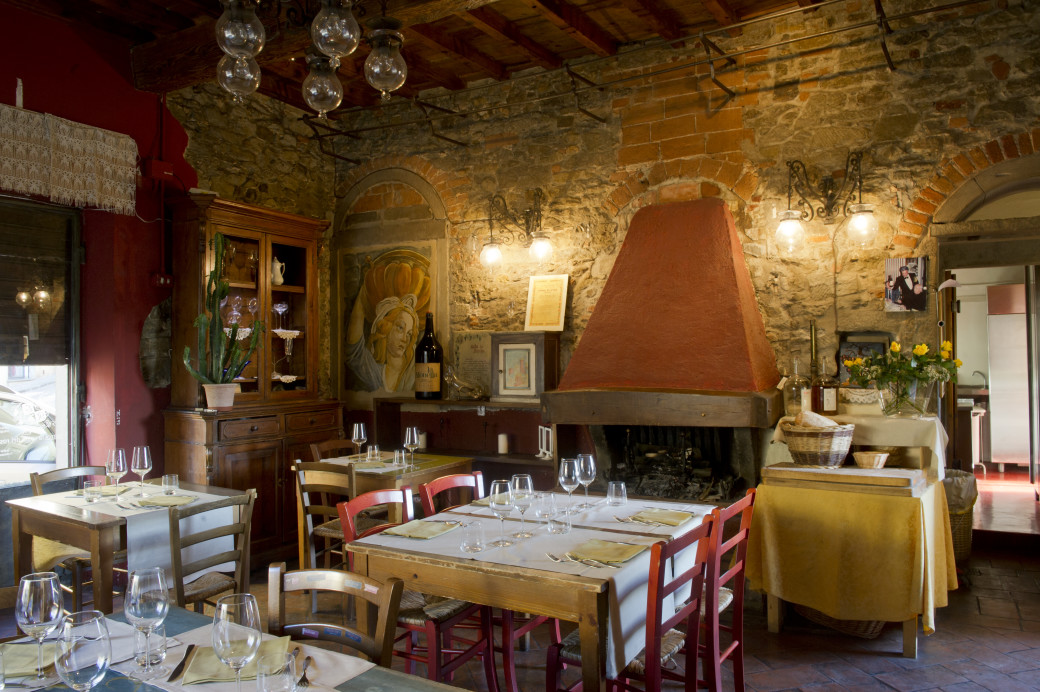 Enoteca La sosta del Rossellino
Enoteca La sosta del RossellinoTo help you discover it, we tell you the 7 dishes with which you will enter into symbiosis with the city. You will understand at the first bite what the secret ingredient of Florence is, the Sublime that was produced here centuries ago by the ingenious manipulation of simplicity: brick and stone in art. Bread, meat and vegetables in the kitchen.
Here is also our definitive guide to the best restaurants in Florence!
Caravaggesque in the alternation of white and deep red. Renaissance in its origins, when it was cooked over large bonfires on the night of San Lorenzo. But above all Florentine: steak has made a pact with the city. It is Florence's most famous dish in the world even though the name has English origins.
To make a bistecca alla fiorentina to perfection, you have to take a steak in the tenderloin two fingers or two and a half fingers high, weighing about 1.2 kilograms (there are those who claim that the one in the rib is not that much worse, what is certain is that it costs about 20 percent less). Before cooking it should be kept at room temperature from 2 to 10 hours. Afterwards it is roasted over oak or olive coals, 5 minutes on one side and 5 minutes on the other.
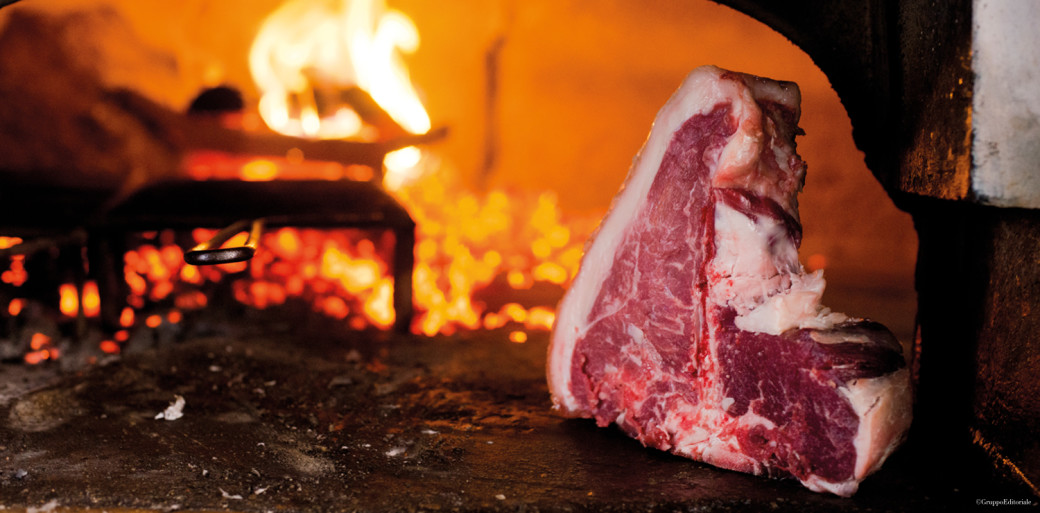 ph. Dario Garofalo
ph. Dario GarofaloIt should not be salted before the cooking is completed. Purists eat it this way, naked and raw (or rather, cooked rare), without seasoning it even with a drizzle of oil, if the raw material is of the highest quality. We recommend accompanying it as per tradition with white beans cooked in the fiasco, another typical Florentine dish.
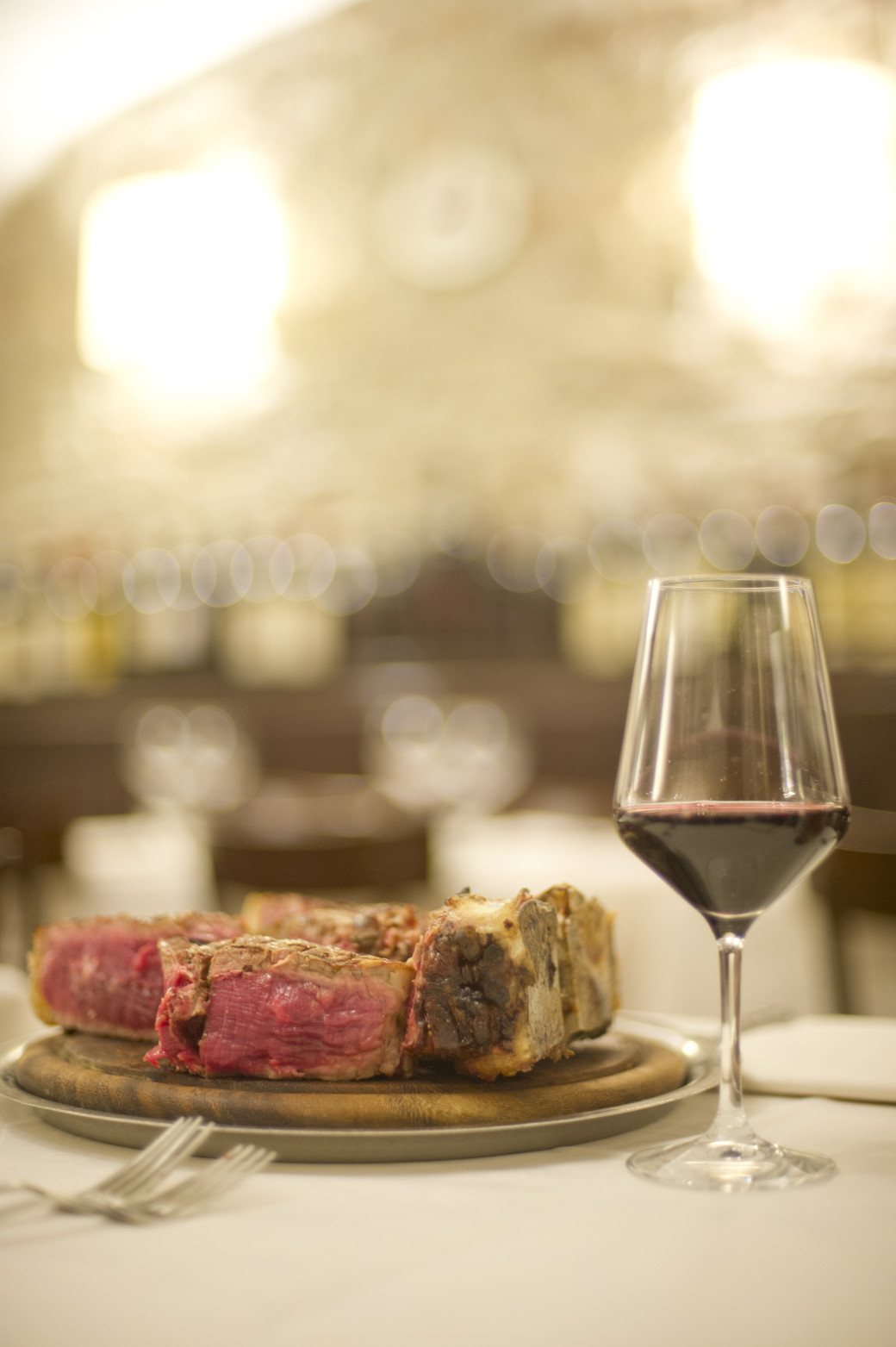 Bistecca alla Fiorentina di Buca Mario
Bistecca alla Fiorentina di Buca MarioHere you will find addresses where to enjoy the best steaks in Florence. If you want to cook them yourself here are the best butcher shops in town where you can go to buy them for sure.
And if you want to know anything and everything about the subject, we suggest the book on Steak, a work omnia for enthusiasts and connoisseurs! A 200-page volume with more than 180 previously unpublished photographs written by food and wine critic Aldo Fiordelli, with a foreword by Allan Bay. A journey to the best trattorias and restaurants that offer Fiorentina: 23 in Florence, 10 in Tuscany but also in Milan, London, Paris and New York.
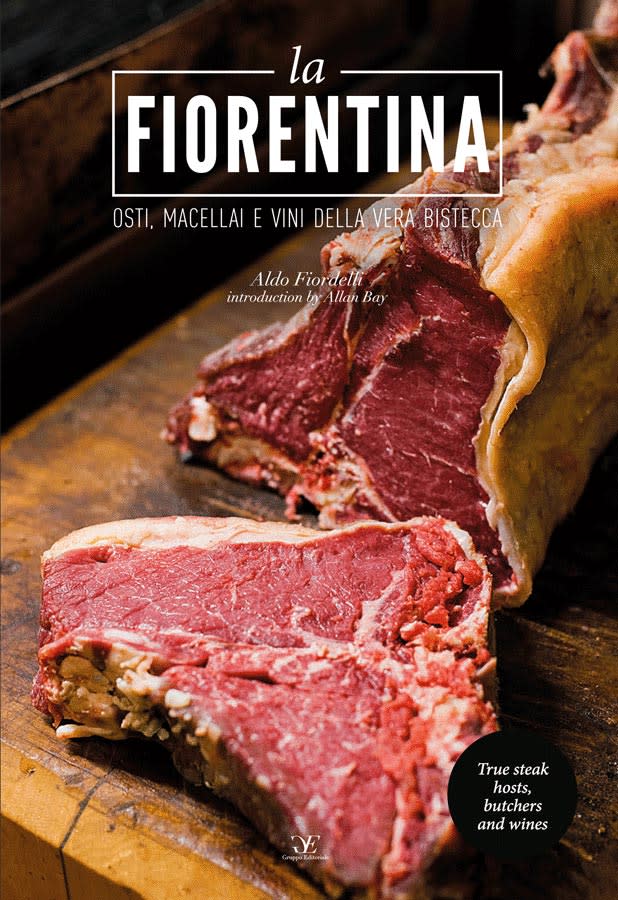 True steak. Hosts, butchers and wines
True steak. Hosts, butchers and wines
Bread is the main ingredient in this soup, which is considered on menus to be a first course on a par with pasta and risotto, but for the peasants of yesteryear it was a main course. Strictly silly bread as they say here, which means unsalted.
This trait dates back to the 12th century when the struggles between Pisa and Florence led Pisa (which at the time was one of the 4 Maritime Republics of our peninsula) to block the salt trade to the interior, so the Florentines decided to bake without salt. Here is where stale bread, that is, aged a few days because it was leftover, is reused as a base for this famous soup to which are added, in addition to white beans, some very common garden vegetables: onions, carrots, celery, black cabbage (essential). HERE you can find the recipe for the real ribollita.
Ribollita because the peasant women prepared a large quantity that was gradually re-boiled, that is, reheated each time it was brought to the table. It is served with a drizzle of raw extra virgin olive oil. Here are the restaurants and trattorias where you can find the best ribollita in Florence and Tuscany.
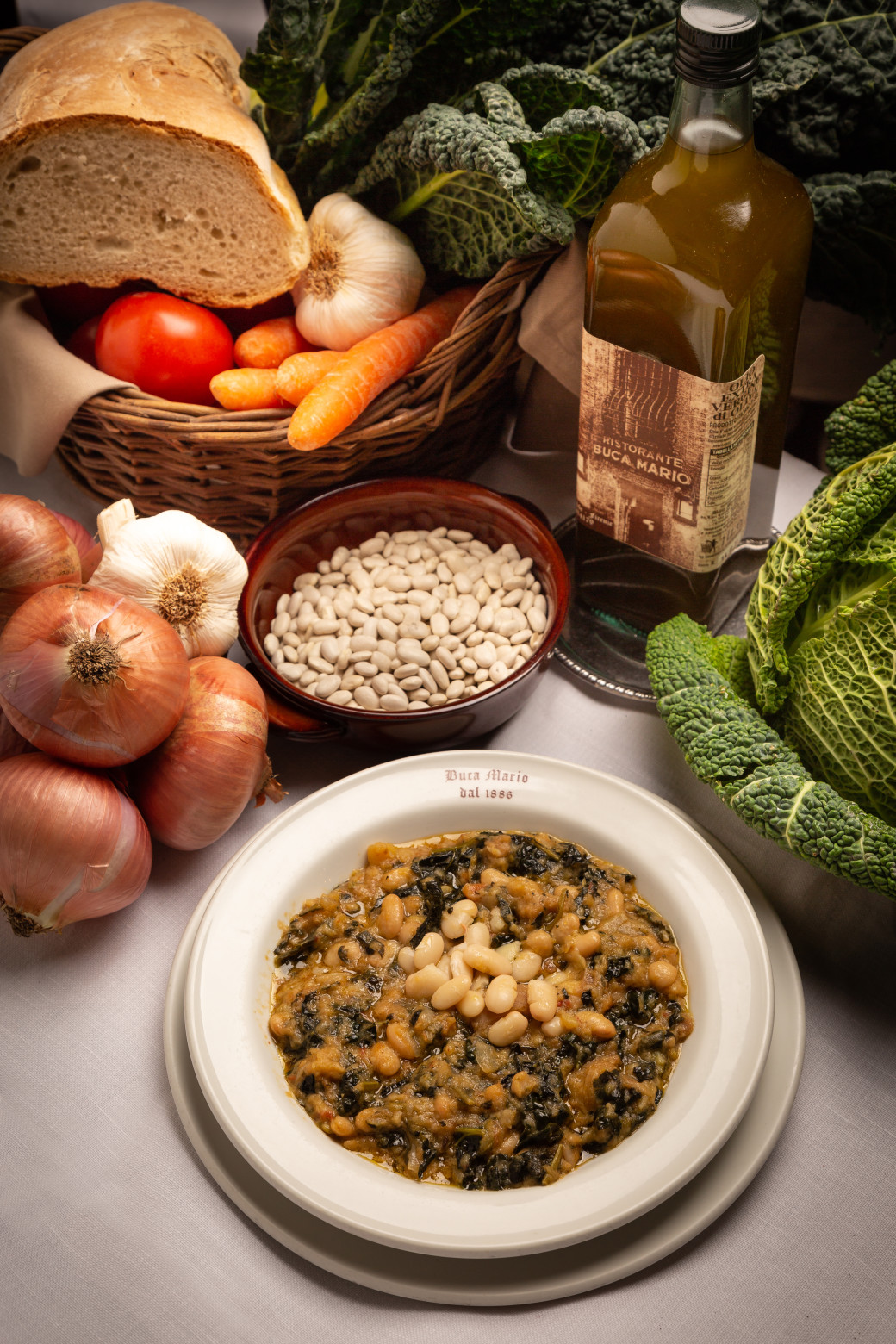 Ribollita - Buca Mario
Ribollita - Buca MarioMore stale bread is the basis of this other emblematic and very popular soup made with tomatoes, garlic, basil, broth and olive oil. Pappa col pomodoro is an essential dish. The extreme simplicity of its taste is not directly proportional to the ease of its preparation. getting the bread wrong can lead to the most total debacle, finding yourself in the dish with a sticky, slimy mixture perfect for smearing the walls of your kitchen.
Yes, because a pappa col pomodoro worthy of the name starts from a very difficult base: finding the right bread! Fundamental is a homemade bread, possibly baked in a wood-fired oven, without salt and with a crumb with a wide and light alveolation. To learn about restaurants and trattorias where you can find the best pappa al pomodoro in Florence and Tuscany click here.
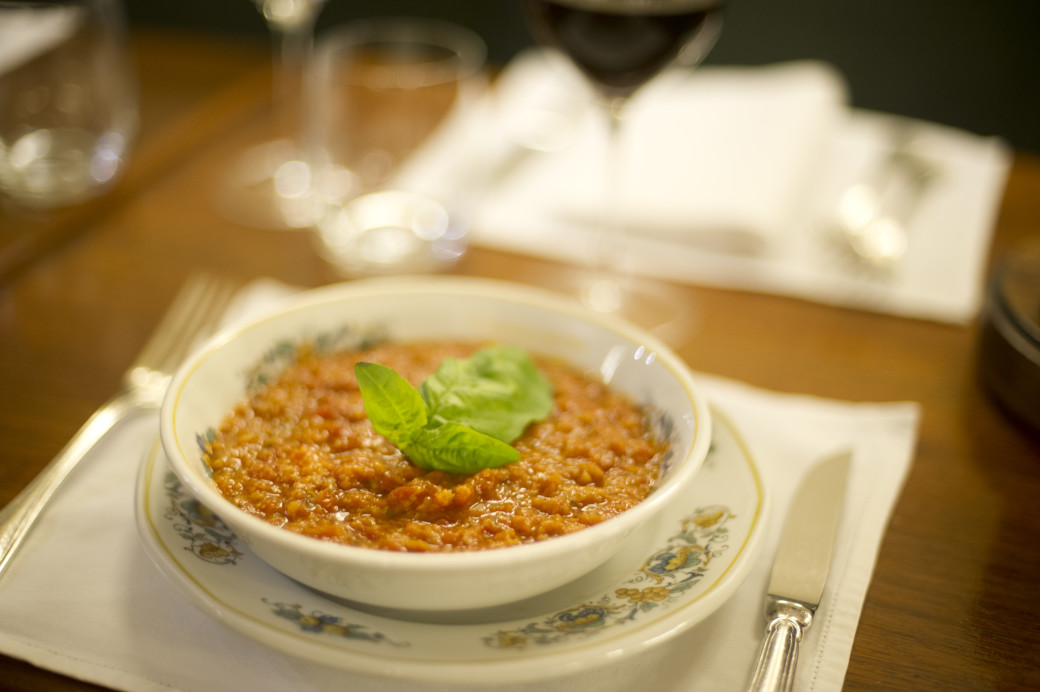 Pappa al pomodoro
Pappa al pomodoroARTICHOKE PIE
A poor man's dish made with eggs and artichokes. In theory it would be the equivalent of a simple artichoke omelet, in fact the art of certain epic cooks these days has made it sublime, bringing it to the forefront with ingenious tricks and interpretations. There is not much more to add, except to invite you to try one of these carefully selected versions we recommend.
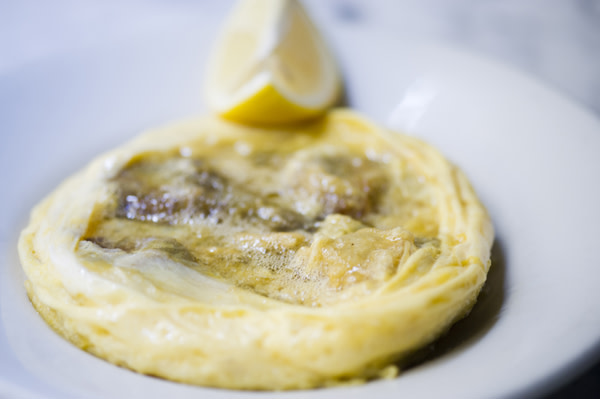 Tortino di carciofi
Tortino di carciofiARISTA
No Sunday or Christmas in Florence is complete without a baked arista served at lunchtime. The history of this second course speaks volumes about its nobility. The arista is in fact a piece of pork that is obtained from the back, up to and including the loin. It can be cooked with or without the ribs, although when it is cooked with the ribs, with the bone it is said in Florence, the meat is much tastier. Another important thing, the arista must be fatty. A lean cut of arista runs the risk of being tasteless, dried out and stodgy, thus a disgrace to the discerning palates of Florentines. It is served hot, sliced, along with roast potatoes. If you want to discover restaurants and trattorias where you can enjoy the best arista in Florence, just click.
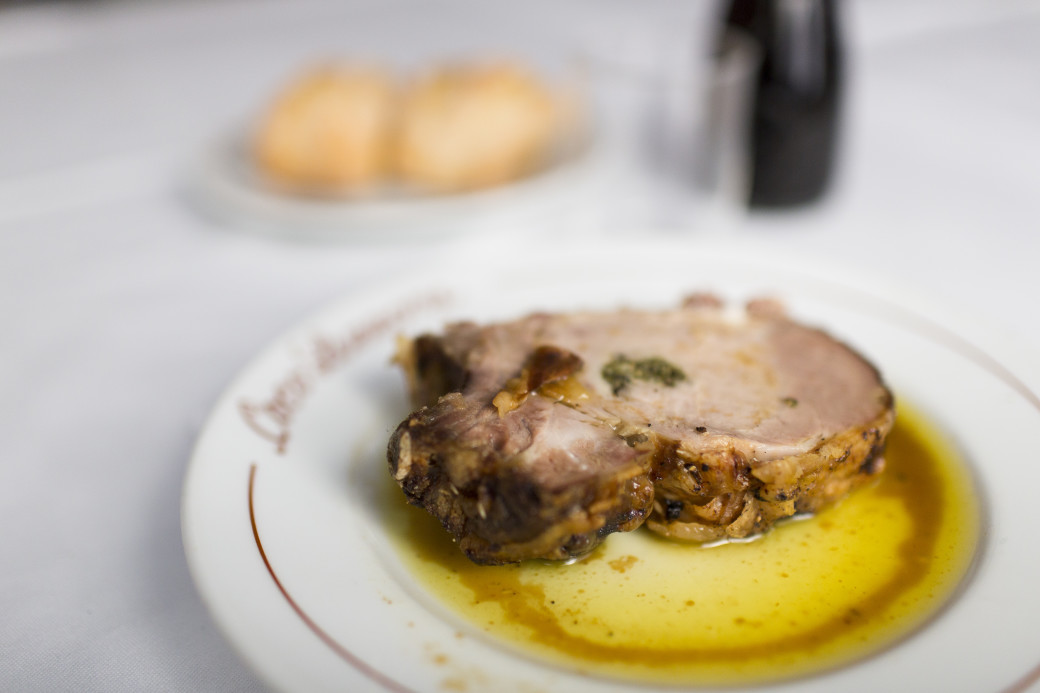 Arista
AristaLAMPREDOTTO
In Florence we are famous for lampredotto sandwiches. Prepared with beef or veal innards, these offal represent for amateurs a noble bouquet of flavors in spite of the gruesome poverty of the raw material. Lampredotto is in fact one of the four stomachs of cattle (abomasum) that is first properly washed and then cooked for a long time in boiling water with tomatoes, onion, parsley, celery, salt and pepper. Once cooked, it can be enjoyed as a normal boiled meat, seasoned with salsa verde, or in the manner most beloved by Florentines, that is, cut into small pieces used as the filling of an unsalted sandwich (the top slice of which must be soaked in the broth of the lampredotto itself), again seasoned with salsa verde, salt, and pepper.
You'll find the best lampredotto sandwiches at the so-called Lampredottai, little street stands located in various parts of the city. Very popular at lunchtime, among the regulars it's easy to run into star chefs, Florentine aristocrats and hotshot professionals. To find out where to go, click here. Here, on the other hand, find all the best sandwiches to taste in the city.
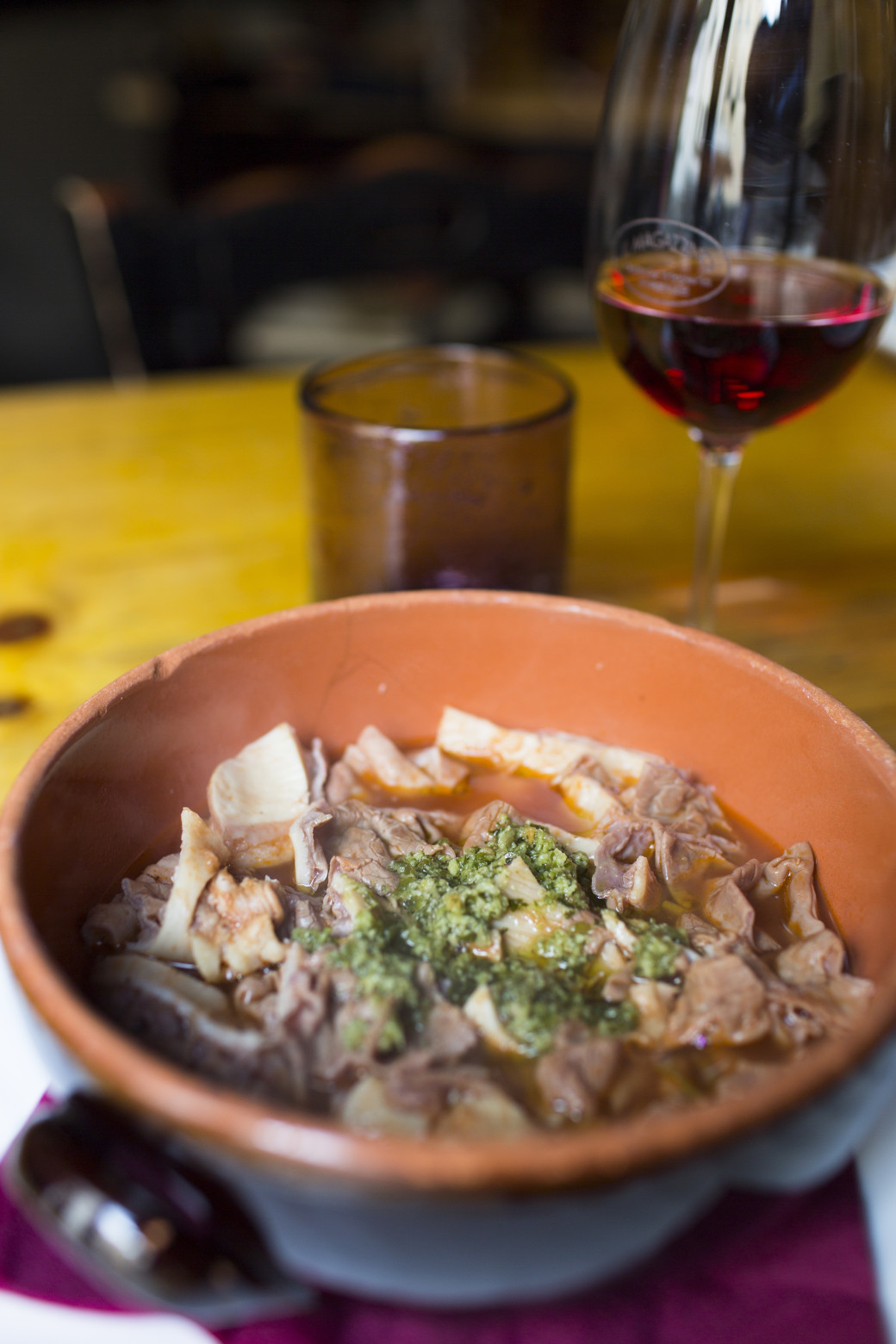 Lampredotto al piatto
Lampredotto al piatto
TRIPPA ALLA FIORENTINA
This is another typical Florentine second course made from offal, tripe, which is part of the so-called fifth quarter. It is a very inexpensive cut made from different parts of the bovine stomach (cuff, cross, etc.). It is prepared by slicing the tripe, well washed, into strips and adding it to a sauté of chopped onions, carrots and celery. Peeled tomatoes are then added and left to cook until the water from the tripe and tomatoes is withdrawn.
It is served hot with a sprinkling of pepper and a drizzle of extra virgin olive oil. In the days of yore, the broth in which the tripe was cooked was also sold by the flask, and an excellent soup was made from it where rice was cooked with it. To find out where to go for the best Florentine-style tripe, click here.
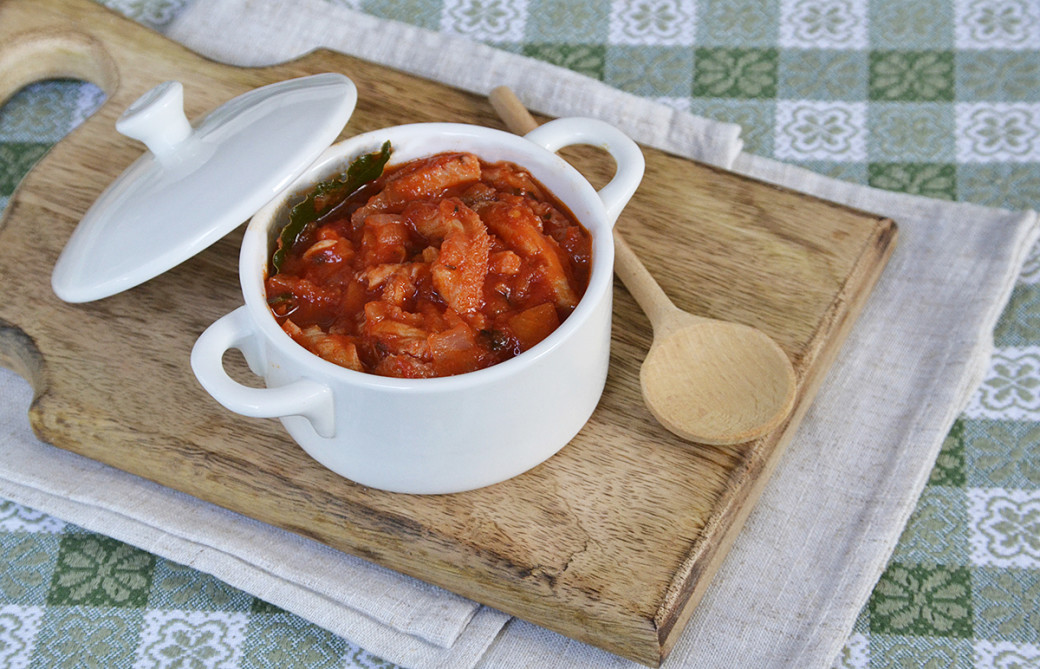 Trippa alla fiorentina
Trippa alla fiorentinaBEANS IN THE FLASK
This is a dying dish that involves cooking cannellini beans in the embers of a bread oven after placing them inside a spagliato flask, with a slightly wider neck than ordinary flasks. The custom later spread among farmers who would put the flask in the oven where they had just baked bread. The flask was placed on the still-hot ash, and the slow, steady temperature cooked the beans while leaving their fragrance intact. A slow cooking that explains why in the absence of ovens, flasks and patience this side dish gradually disappeared. In a few trattorias the custom still survives, that's where.
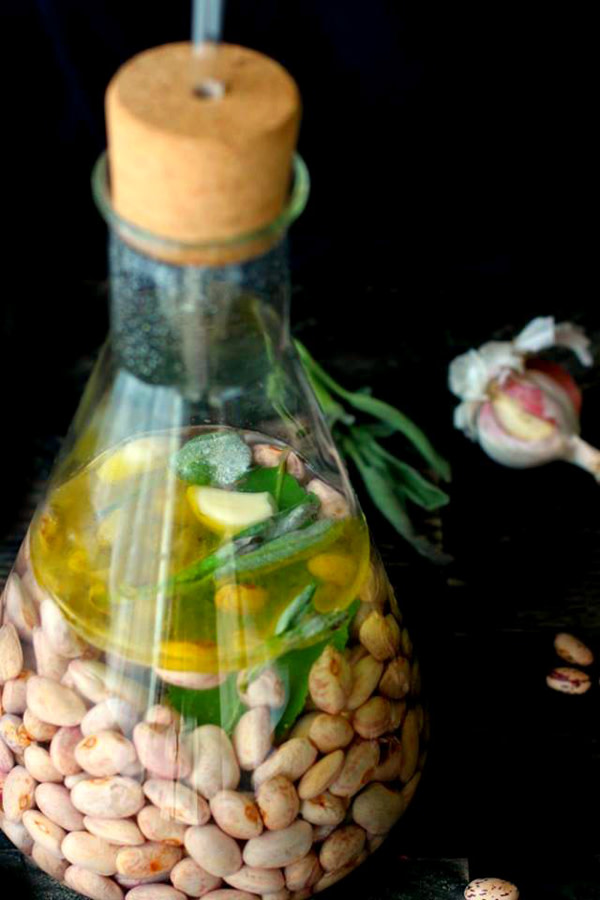 Fagioli nel fiasco
Fagioli nel fiasco








